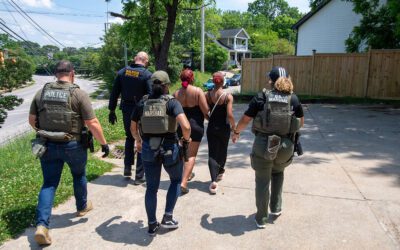Creating a safer community requires us to be vigilant and informed about the signs of human trafficking. At AIDBIPOC, we’re dedicated to empowering individuals with knowledge that can make a difference. This blog post focuses on recognizing signs that someone may be a victim of human trafficking and the crucial steps our community can take to intervene.
Signs of Human Trafficking:
- Visible Signs of Physical Abuse:
- What to Look For: Unexplained injuries, bruises, or signs of physical harm.
- Why It Matters: Human traffickers may use violence to control and intimidate their victims.
- Isolation from Community and Support Networks:
- What to Look For: Individuals who are suddenly isolated or detached from their usual community and support systems.
- Why It Matters: Traffickers often employ isolation to maintain control over their victims.
- Lack of Personal Identification:
- What to Look For: Victims may not possess personal identification or documents, as traffickers often confiscate them.
- Why It Matters: This lack of identification may indicate control exerted by traffickers.
- Restricted Communication:
- What to Look For: Limited or closely monitored communication, especially when in the presence of others.
- Why It Matters: Human traffickers may control victims by monitoring and restricting their ability to communicate freely.
- Fearful or Submissive Behavior:
- What to Look For: Individuals displaying fear, anxiety, or submissive behavior when questioned.
- Why It Matters: Victims may fear retribution or harm if they speak out.
- Signs of Exploitative Work Conditions:
- What to Look For: Individuals engaged in labor that seems exploitative or significantly disproportionate to the compensation received.
- Why It Matters: Traffickers often exploit victims for forced labor under unfair and abusive conditions.
- Presence of a Controlling Figure:
- What to Look For: Victims accompanied by someone who seems overly controlling and exerts undue influence.
- Why It Matters: The presence of a controlling figure may indicate a trafficking situation.
Taking Action:
- Report to Law Enforcement:
- If you observe any of these signs, report your suspicions to local law enforcement immediately.
- Use Hotlines and Resources:
- Familiarize yourself with human trafficking hotlines and resources. Report concerns to the National Human Trafficking Hotline (1-888-373-7888).
- Educate Others:
- Raise awareness within your community about the signs of human trafficking. Education is a powerful tool in prevention.
- Be Supportive:
- Approach potential victims with empathy and support. Encourage them to seek help from professionals and support organizations.
Conclusion:
By being aware of the signs of human trafficking, our community becomes a stronger force against this heinous crime. AIDBIPOC encourages everyone to stay informed, trust their instincts, and take action. Together, we can create a community that actively protects its members and stands united against human trafficking.





0 Comments